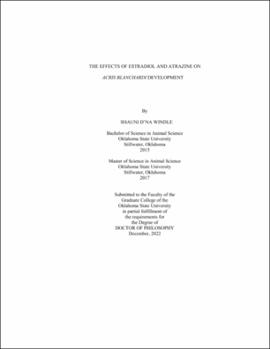| dc.description.abstract | Developmental toxicology studies commonly use amphibian models to detect effects of endocrine disrupting compounds (EDCs). Many of these studies however utilize model species not native to North America. For example, the African clawed frog (Xenopus laevis) is most often used for EDC studies. While extremely useful due to its sensitivity to contaminants and established life history, it likely does not accurately describe North American native amphibian responses to EDC exposure. While native species have been used, there is high degree of species sensitivity and illustrates a need for a broader range of native species models. Furthermore, the rate of development in the amphibian species used can influence the detectability of EDC related effects. For instance, common practice is euthanasia of animals at, or immediately after, metamorphosis. However, many of these species do not reach sexual maturity until at least a year after metamorphosis. When euthanized too early, there is the potential of misidentifying or missing EDC related effects due to lack of maturity or undifferentiation of organs such as gonads. Due to these reasons, we proposed the use of a native species, Acris blanchardi¸for future developmental assays. The rapid development of this species makes it a promising model as EDC related effects can be detected even prior to overwintering in southern populations (i.e., Oklahoma). To support our claims of rapid development, the first chapter first chapter here outlines a brief life history assessment by comparing wild animals collected over three time points: fall, spring, and summer. We saw that juvenile males were already actively producing mature spermatozoa. Females already possessed diplotene and pre-vitellogenic oocytes prior to overwintering. Following life history assessment, chapters 3 and 4 outline outdoor exposure experiments using 17β-estradiol (E2) and atrazine. Neither EDC influenced time to metamorphosis, recovery, or sex ratio. Estradiol effects were limited to a slight feminization of males in the form of oviduct development and depressed ovary and oviduct development in females. Atrazine had no effect on male development and limited effect on female body and gonad size in an algae supplemented group. For the final chapter, we performed a laboratory study where we exposed A. blanchardi larvae to E2 throughout development and with the removal of environmental cues. Male testis development was depressed in both E2 concentrations. | |
